 .
.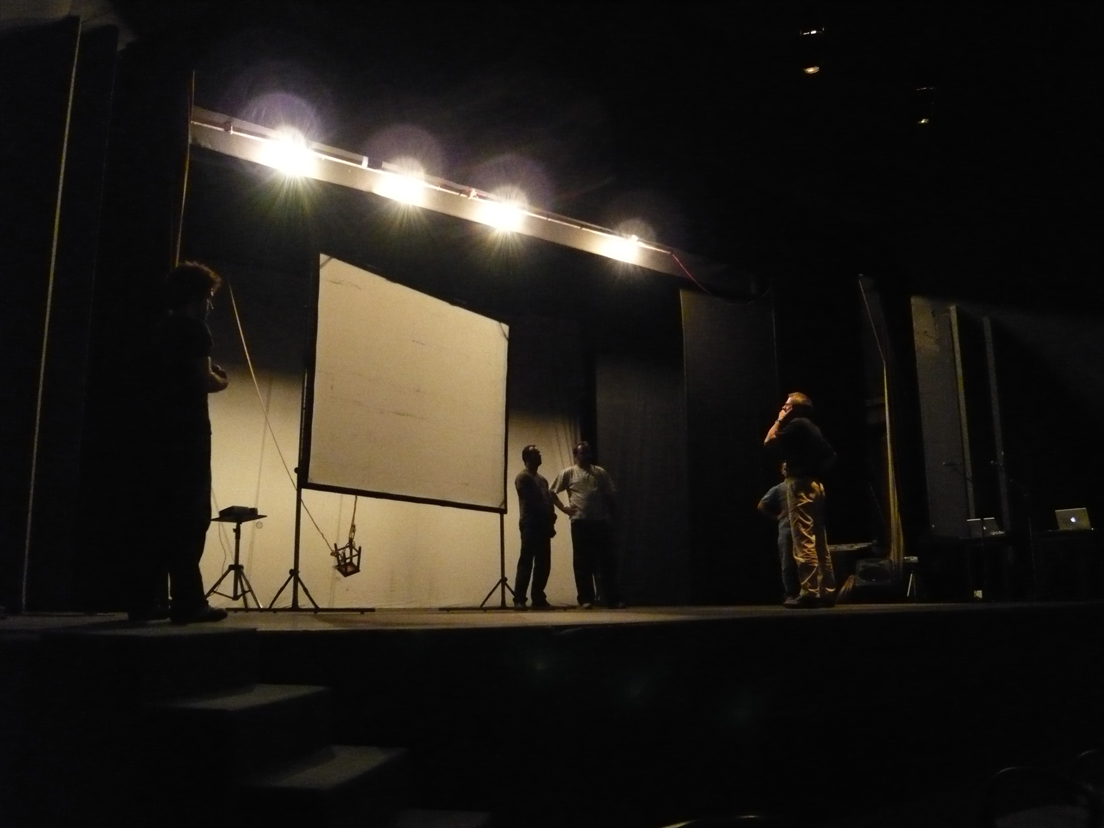
Notes on Johannes Birringer’s workshop (Performance and interactive technology/Performance e Tecnologias Interativas) during the International Theatre Festival of Belo Horizonte, 2008.
 .
.
Setting up for the workshop at Francisco Nunes Theatre. Photos (c) Luca Forcucci
Introduction
The 2008 Interaktionslabor took place in the Teatro Francisco Nunes of Belo
Horizonte in the context of the International Theatre Festival (FIT). The workshop
aimed at developing and experiencing contemporary methods of collaboration on
the composition with multi - media methods of mise-en-scène.
In this paper I will explore the sound / music for digital performance with
its relation to the modified performance space (with video, screens, projections
and virtual/immaterial space created by telecommunications / web broadcast),
through the conceptual idea of space as an element of composition. The exploration
and the set up of the digital performance space involve constraints in order
to built it efficiently. Those are (but not limited to):
A media studio, which is ideally an empty box or a non-dedicated performance
space.
In this space, there is a guiding principle of inter-disciplinary art through
performance, dance, cinema, visuals, sound, music, etc.
There is also an augmented space created through network and / or web broadcast
(immaterial architecture).
The key questions related to sound / music that appeared in my exploration were:
1) How is sound / music part of the digital dance / performance space and what
is its function?
2) What kind of sound / music is composed?
3) How does sound / music influence a dancer / performer in this space ?
4) How can sound / music create space inside the performance space ?
Overview
After 5 days of exploration on possibilities to modify an existing performance
space with interactive screen images, projectors/projections and web broadcasting,
we came up with several action sets. Each of theses sets was a dispositif with
different positions of live cameras, screens for video projection and position
of the dancers / performers. The light design of the stage defines obviously
some of the positions of the interpreters who have to be seen to be captured
by the live cameras. The dramataturgy responds to these different situations.
Nature of sound / music
Depending of the dramaturgy of the performance, music adds a form of narativity;
but working with acousmatic forms of music or electronic (computer) music creates
a dialog with the performer. Working with sounds from specific locations can
create interesting sonic allusions in conjunction with the performance.
In a digital performance, a lot of media are present (video, sound, web broadcast);
this implies working with just a few elements in the sound / music production
in order to be more powerful (less is more…).
Influence of the sound / music on the dancer or performer
In this research on the stage / digital environment the influence of the music
can modify the behavior of the dancer / performer, but also create a network
between the sound / visuals / performance / dance, as these forms become interrelated.
This creates necessarily a synaesthetic experience.
A dancer told that she felt good with the sounds / music, and that it influenced
her movements during the performance. But in the same time I was influenced
by the movements she made in performance for the compositions of my music. In
this case a embodied / physical and mental network is created in the real time
conditions of creation and interaction.
On one musical piece I worked only with a japanese sentence (Do ita shima shite).
I modified this sentence by cutting it in a lot of pieces, but still recognisable.
A Brazilian actor didn’t recognise the sentence and thought that his voice
was modified during the performance (as we also had set up several live microphones
on the set).
Space inside the space
We created an illusion of space inside the space with video through the interactive
Isadora software. In one rehearsal, there was a mix between images taken from
the outside municipal park and a dancer on stage filmed live. The result is
the image of the dancer walking « in the image » with shots of the
park (water, trees, cats, lovers in a boat…).
In this situation I added field recording of my self walking in the park in
order to give another space perspective. The result is a multilayered space
with the sound and the video. Space inhabits the space inside the space.
I noticed that beeing too literal with the sounds kills the dreamy landscape
(ie video of a car in the streets and sounds from cars is not convincing).
I think it is better to work with sonic allusions or sonic counterpoint.
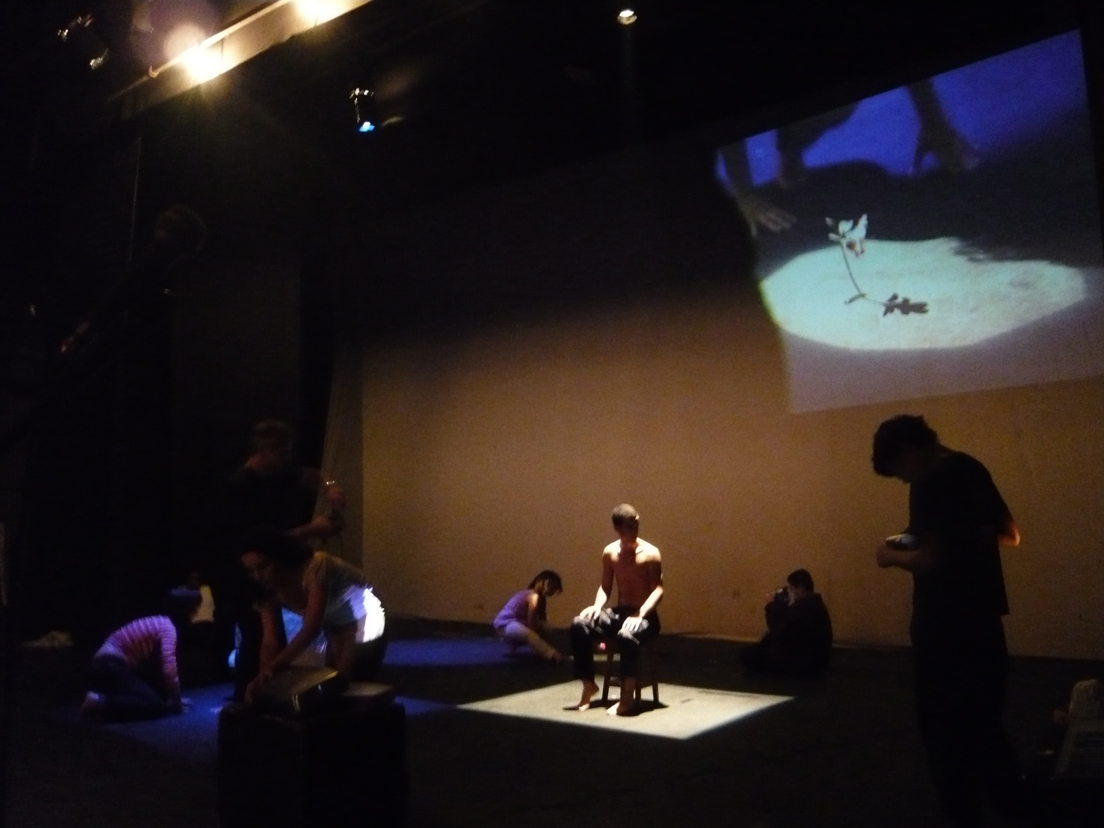
Setting up for Friday night rehearsal (c) Luca Forcucci
Rebuilding the space of the space
The workshop took place in a theater. The idea was to rebuild the space in order
to «declassify» the original space. That would have given us the
ability to go from a classical performative space (a proscenium theater) to
a digital performative space able to be digitally augmented through broadcast
networking or video projections. Test rehearsals to simulate telepresence and
distributed spatial locations ("Belo Horizonte", "Rio de Janeiro")
took place on Saturday night, the fourth evening of the workshop, and two live
camera feeds channeled images to two screens - the actors on either location
could only interact with the "remote" images.
The immersive sensation produced by the sound is a major issue. We were able
through 2 big loudspeakers, positioned on the back of the space, to send sound
to the stage. There was also a sound monitor on stage to focalise on sources
depending of the needs. The house PA was also present.
Key questions in relation with video and augmented reality created by them are:
How does positionning the screens affect the movements of the
dancers / performers ?
How do anamorphoses and imnage distortions affect the dancers / performers ?
How does having several projectors and screens, clothes and textiles, fabrics, objects and moving screens add plasticity to the image?
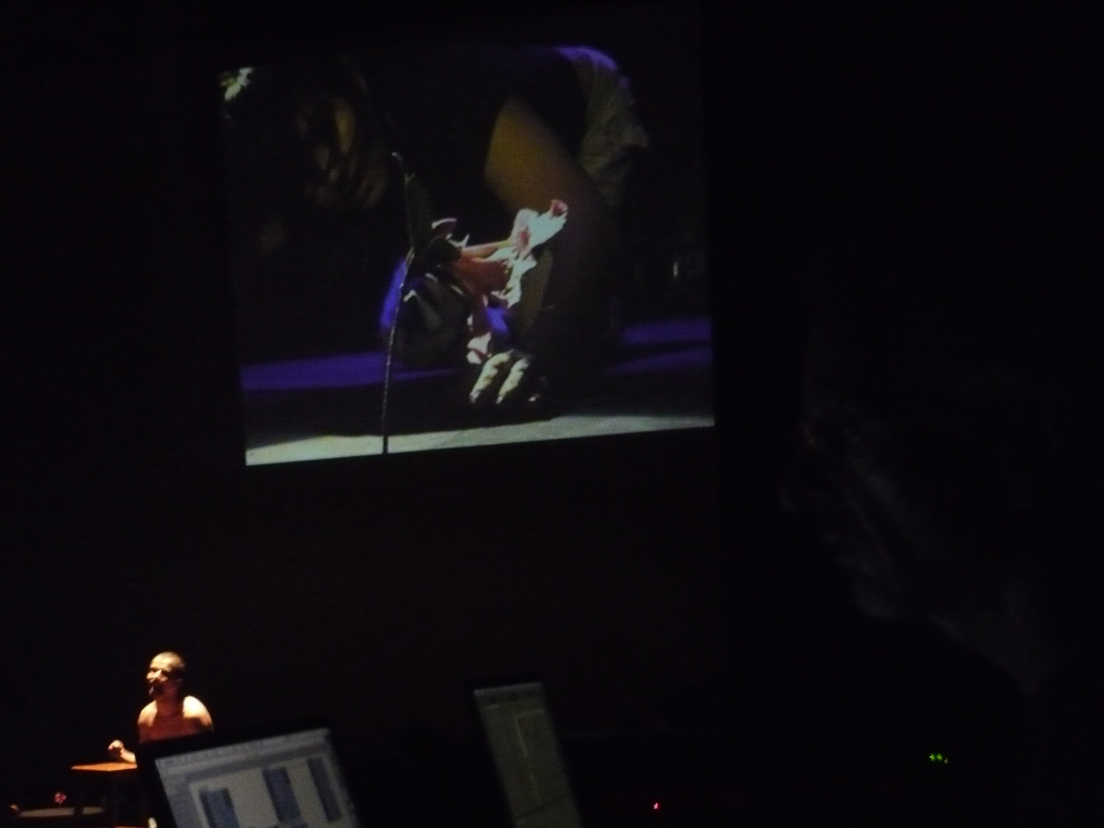 .
. 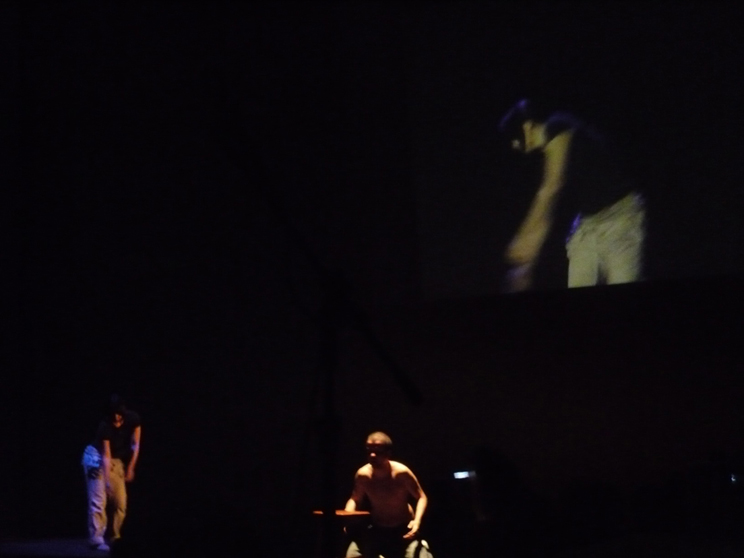 .
. 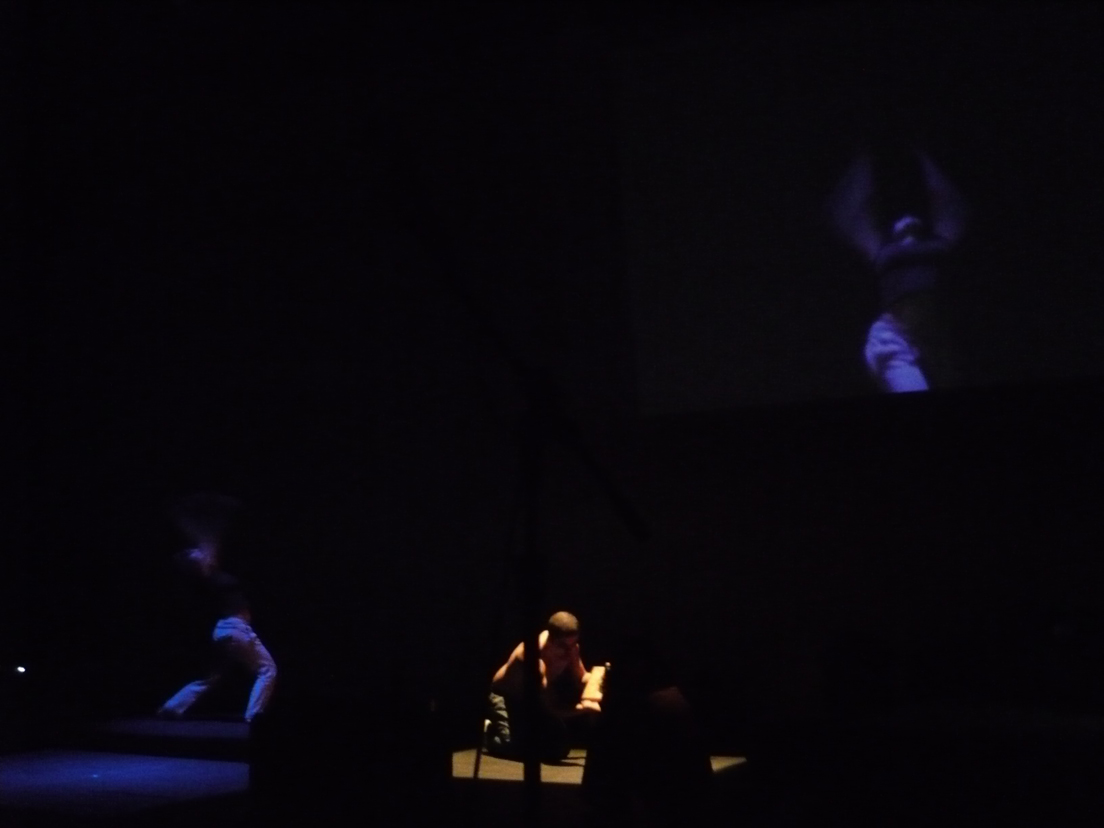
Workshop rehearsal photos (c) Luca Forcucci
Synaesthesia & space
All the experiments we conducted with the different positions of screens in
the performance space, the sound / music spatial composition, the performance,
and the dance, gave us the opportunity to reach a synaestetic experience.Several
senses were involved (vision, hearing, touch…) and an immaterial sensation
was created by the dissembodied experience of the dancer or performer projected
in another space through live video projection.
At one point I heard an interesting notion proposed by Birringer, namely the
notion of "wearing" images, a reference top recent work he had done
in his DAP- LAB with interactive (intelligent) garments. I would argue that
this can be extended to the notion of wearing sound, if one can obtain an immersive
system. The body is a reference in space, but it shifts from physical to immaterial
when it is projected through the web or on screen. It gives an immaterial feedback
to the dancer / performer and a delay when projected through the web. This wearing
of the sound can also be related to the "wearing" of space itself?
________
Texte und Kommentare zum Labor 2008 werden hier veröffentlicht
Texts and commentaries on the 2008 lab and related research subjects will be published here.